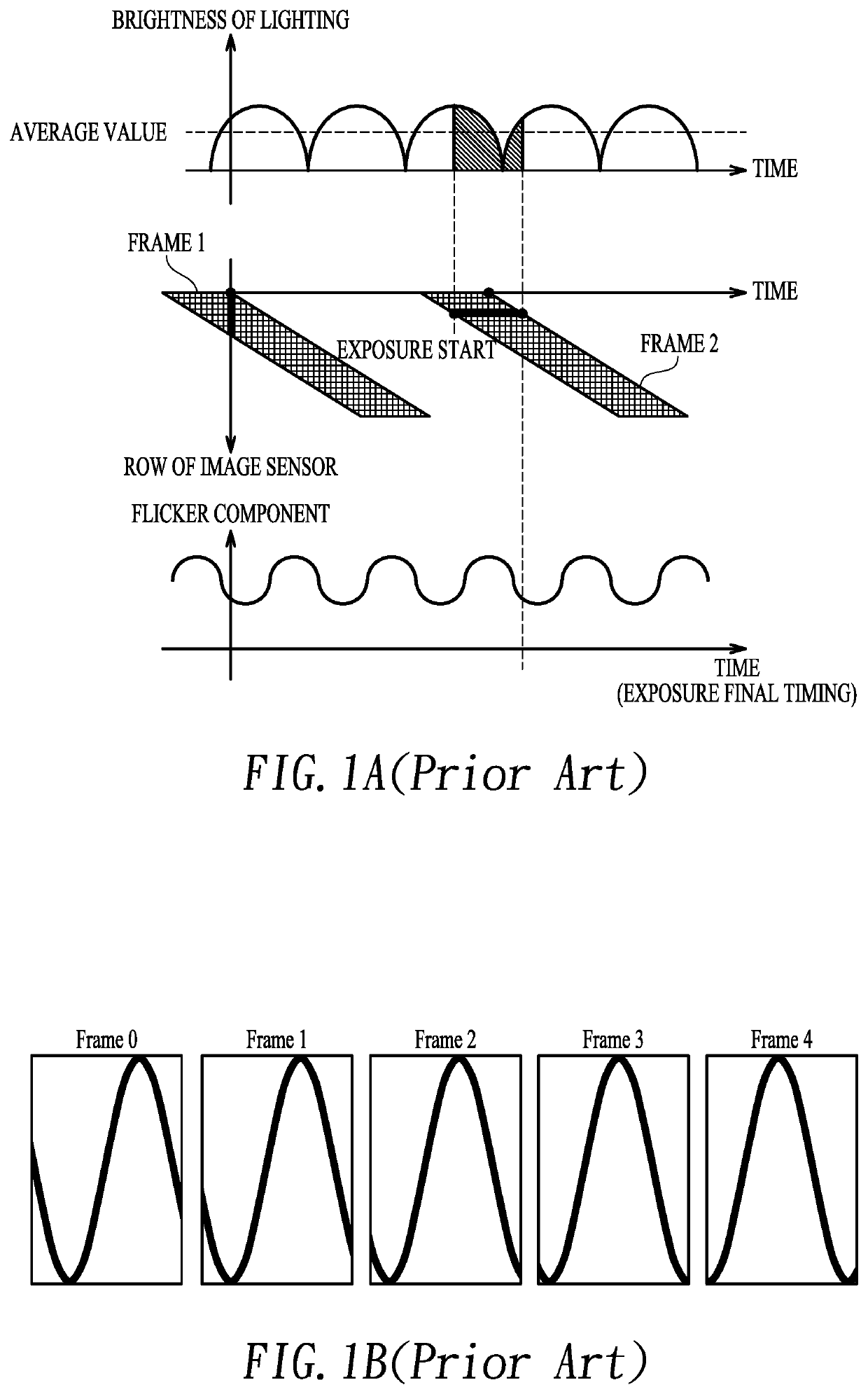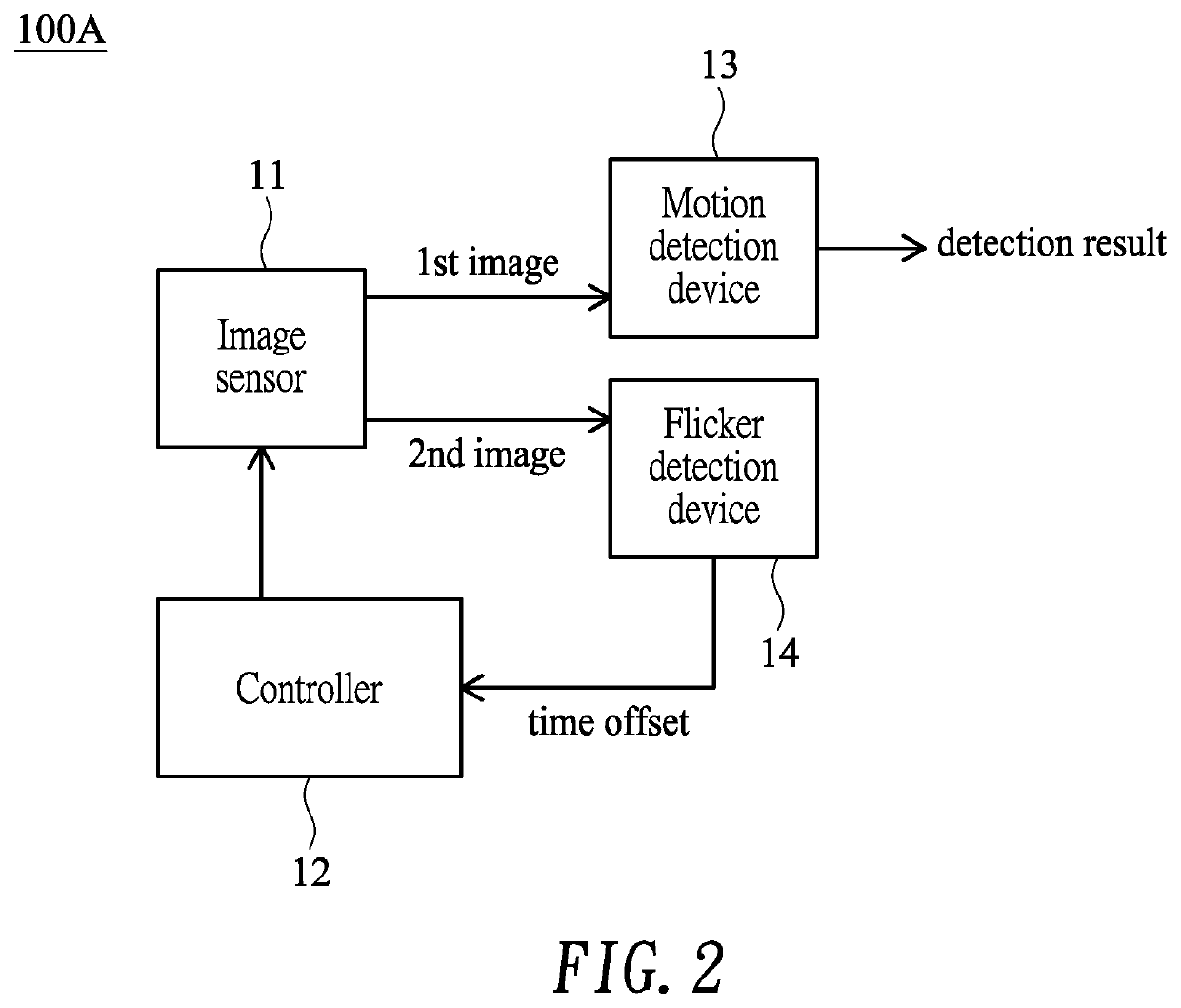Motion detection system with flicker compensation
a motion detection and flicker compensation technology, applied in the field of motion detection, can solve the problems of moving flicker banding still occurring, power consumption becomes critical for lengthening the operation life of the motion detector, etc., and achieves the effect of low power consumption and motion detection sensitivity
- Summary
- Abstract
- Description
- Claims
- Application Information
AI Technical Summary
Benefits of technology
Problems solved by technology
Method used
Image
Examples
first embodiment
[0024]FIG. 2 shows a block diagram illustrating a motion detection system 100A with flicker compensation according to the present invention. Some blocks of the motion detection system 100A may be performed by hardware, software or their combinations (e.g., performed in a digital image processor).
[0025]In the embodiment, the motion detection system 100A performs motion detection in an automatic wakeup and sleep mode, as exemplified in FIG. 3 showing a timing diagram composed of wakeup cycles Tcycle, each of which includes a wakeup state followed by a sleep state.
[0026]In the embodiment, the motion detection system 100A may include an image sensor 11, such as a pixel array, configured to capture a first image for motion detection or capture a second image for flicker detection, where the second image has a resolution lower than the first image. In the embodiment, second images are captured in at least two consecutive wakeup cycles Tcycle every predetermined number of wakeup cycles Tcy...
second embodiment
[0040]FIG. 7 shows a flow diagram illustrating a motion detection method 200B with flicker compensation according to the present invention. The motion detection method 200B as shown in FIG. 7 is similar to the motion detection method 100B of FIG. 4A except that step 103 of FIG. 4A is replaced with step 103B.
[0041]Specifically, in step 103B, an exposure setting (e.g., exposure time or gain) is obtained, and it is determined whether the exposure setting converges after an exposure setting change (indicating that there is an illumination change and the illumination flicker characteristics may also change correspondingly) and an exposure time is not equal to an integer multiple of an (illumination) flicker period. If decision of step 103B is positive, the flow goes to step 104 to capture second images. Otherwise, the flow goes to step 105 to reset a flicker count FCnt, and then goes back to step 101.
PUM
 Login to View More
Login to View More Abstract
Description
Claims
Application Information
 Login to View More
Login to View More - R&D
- Intellectual Property
- Life Sciences
- Materials
- Tech Scout
- Unparalleled Data Quality
- Higher Quality Content
- 60% Fewer Hallucinations
Browse by: Latest US Patents, China's latest patents, Technical Efficacy Thesaurus, Application Domain, Technology Topic, Popular Technical Reports.
© 2025 PatSnap. All rights reserved.Legal|Privacy policy|Modern Slavery Act Transparency Statement|Sitemap|About US| Contact US: help@patsnap.com



